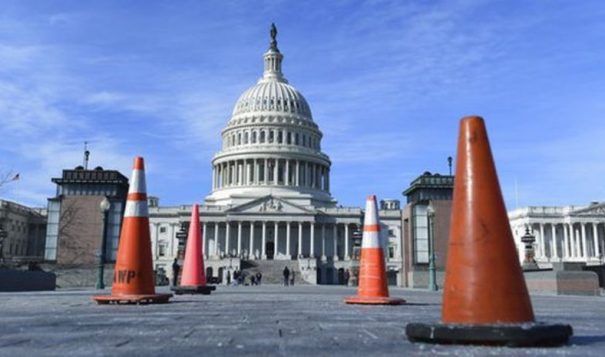
Mark Trahant / Trahant Reports
This fight has been brewing for years. And it’s complicated because there are several different Congressional factions, think of them as mini-political parties, that have different goals in the budget process.
Remember this: The Republicans are in charge. This process could have been resolved within the caucus — if the GOP leadership had the votes. And that’s the main problem. There is not enough votes for an affirmative solution. So much easier to say “no.” (The House did pass their version with the support of the so-called Freedom Caucus. But several Senators in the Republican camp are still not on board because the solution doesn’t send enough money to the military while others are not happy with another Continuing Resolution or any additional spending.
Democrats have not had much say in the government since the election of Donald J. Trump as president. Senate leaders have used budget rules designed to pass legislation with 51 votes. But this short-term spending bill does not qualify. So for once, Democrats have a say. There are three things on their “must” list. They want domestic spending protected (remember, one GOP faction wants deep cuts into government spending). They have been successful doing this with every Continuing Resolution so far because the alternative is the Budget Control Act and that would require deep cuts to the military (as well as domestic programs). Democrats also want funding for the Children’s Health Insurance Program or CHIP. That is a huge program for Indian Country (along with Medicaid) pays the health care costs for more than half of all American Indian and Alaska Native children in the Indian health care system.
The CHIP program is in the House Continuing Resolution. But, as the National Indian Health Board posted yesterday, the House bill “does contain a 6-year reauthorization for the Children’s Health Insurance Program but does not include the Special Diabetes Program for Indians. This is a huge miss. The Special Diabetes for Program for Indians expires March 31. The ideal solution would be for the Senate to include both CHIP and the diabetes program in any deal that’s made with the White House.
The final sticking point for the Democrats is protecting the people who brought to this country as children. The Trump administration wants a solution to include money for a wall — even full funding for that project — as well as an increase in enforcement. Tough sell.
But as I mentioned all of this has been brewing. Instead of having a full debate about these divisions, Congress has been saying it will deal with it later. This is later. (And even then don’t be surprised if a deal just moves this down the road.)
Ideally this will force the Congress into a real debate. Big picture stuff. Yeah, right. I know, but I had to write it anyway.
Of course Indian Country (and the economy) will be hit hard if this shutdown lasts very long. Lots of families, both government employees and contractors, could lose a paycheck.
The problem is we really don’t know exactly how the Trump administration will manage this particular closure.
During the last government shutdown, 21-days that started on December 16, 1995, and continued to January 6, 1996, all 13,500 Department of Interior Bureau of Indian Affairs employees were furloughed; general assistance payments for basic needs to 53,000 BIA benefit recipients were delayed; and estimated 25,000 American Indians did not receive timely payment of oil and gas royalties,” according to the Congressional Research Service. The last time around furloughed employees were eventually paid. Eventually.
All told Standard & Poor’s estimated the U.S. economy lost $24 billion last time around.
The Indian Health Service and the Department of Interior posted planning memos in September about what is expected to happen. Basically: Many BIA employees will be furloughed, except for those that work in public safety or who are managers. However the Bureau of Indian Education will largely continue working, especially those who work with schools and children.
Former Indian Health Service Director former IHS director Dr. Michael Trujillo told Congress that the government closure “caused considerable hardship within Indian communities. One result of staff furloughs was difficulty in processing funds for direct services and to contracting and compacting tribes so the delivery of health services could continue. Those staff that continued providing health services were not paid on time. Threats to shut off utilities to our health facilities and even to stop food deliveries were endured. We reached a point where some private sector providers indicated that they might not accept patients who were referred from Indian Health facilities because of the Federal shutdown.”
Mark Trahant is an independent journalist and a member of The Shoshone-Bannock Tribes. On Twitter @TrahantReports

